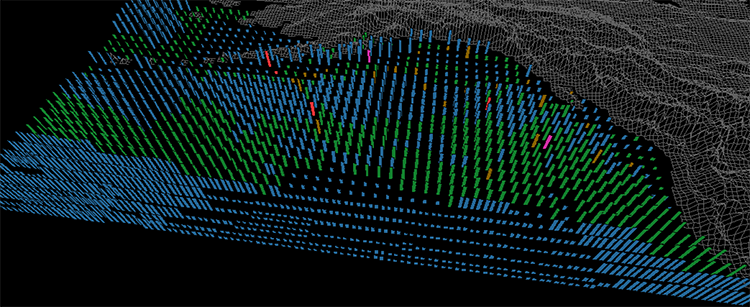Conference paper
Proceedings Graphics Interface 1998 (GI '98), 1998, pp. 177-184
APA
Click to copy
Healey, C. G. (1998). On the Use of Perceptual Cues and Data Mining for Effective Visualization of Scientific Datasets. In Proceedings Graphics Interface 1998 (GI '98) (pp. 177–184).
Chicago/Turabian
Click to copy
Healey, C. G. “On the Use of Perceptual Cues and Data Mining for Effective Visualization of Scientific Datasets.” In Proceedings Graphics Interface 1998 (GI '98), 177–184, 1998.
MLA
Click to copy
Healey, C. G. “On the Use of Perceptual Cues and Data Mining for Effective Visualization of Scientific Datasets.” Proceedings Graphics Interface 1998 (GI '98), 1998, pp. 177–84.
BibTeX Click to copy
@inproceedings{healey1998a,
title = {On the Use of Perceptual Cues and Data Mining for Effective Visualization of Scientific Datasets},
year = {1998},
pages = {177-184},
author = {Healey, C. G.},
booktitle = {Proceedings Graphics Interface 1998 (GI '98)}
}
 $$\begin{matrix}
\small{\textbf{Visualizing historical and estimated plankton densities with hue, current strengths with height,}} \\[-6pt]
\small{\textbf{ and sea surface temperatures with packing density in the northern Pacific Ocean,}} \\[-6pt]
\small{\textbf{this data is used as input to models of Sockeye salmon migration}} \\
\end{matrix}$$
$$\begin{matrix}
\small{\textbf{Visualizing historical and estimated plankton densities with hue, current strengths with height,}} \\[-6pt]
\small{\textbf{ and sea surface temperatures with packing density in the northern Pacific Ocean,}} \\[-6pt]
\small{\textbf{this data is used as input to models of Sockeye salmon migration}} \\
\end{matrix}$$
Scientific datasets are often difficult to analyse or visualize, due to their large size and high dimensionality. We propose a two-step approach to address this problem. We begin by using data mining algorithms to identify areas of interest within the dataset. This allows us to reduce a dataset's size and dimensionality, and to estimate missing values or correct erroneous entries. We display the results of the data mining step using visualization techniques based on perceptual cues. Our visualization tools are designed to exploit the power of the low-level human visual system. In order to demonstrate our techniques, we visualized an environmental dataset being used to model salmon growth and migration patterns. Data mining was used to identify significant attributes and to provide accurate estimates of plankton density. We used colour and texture to visualize the significant attributes and estimated plankton densities for each month for the years 1956 to 1964. The result is a visualization tool that allows users to quickly locate specific plankton densities and the boundaries they form. Users can compare plankton densities to other environmental conditions like sea surface temperature and current strength. Finally, users can track changes in any of the dataset's attributes on a monthly or yearly basis.